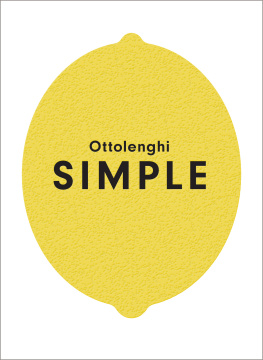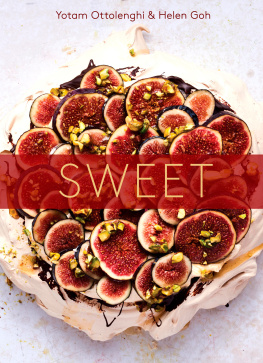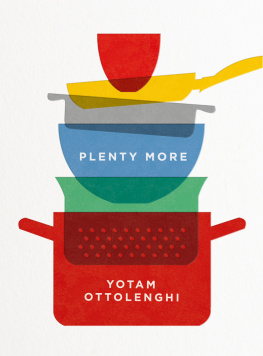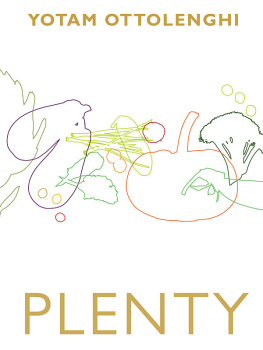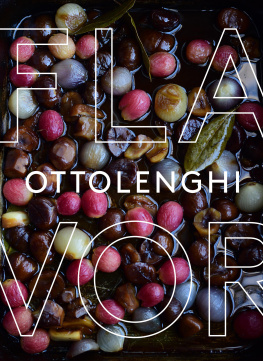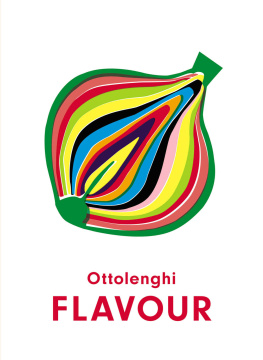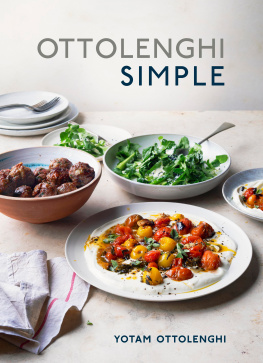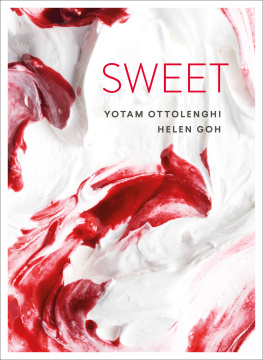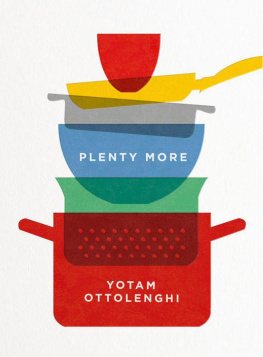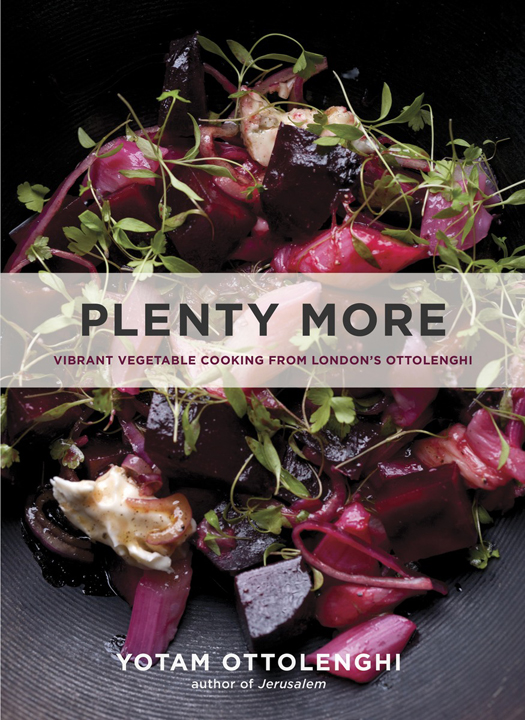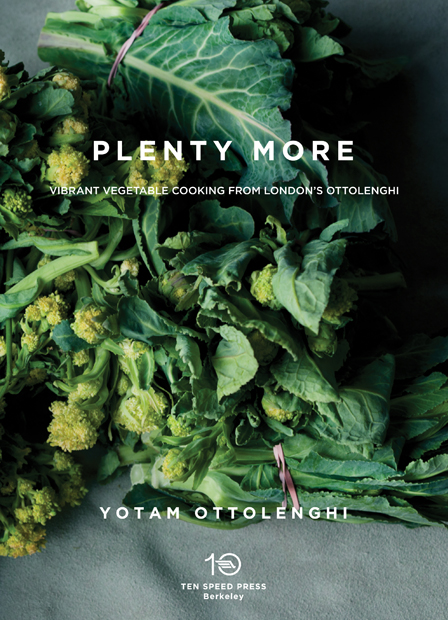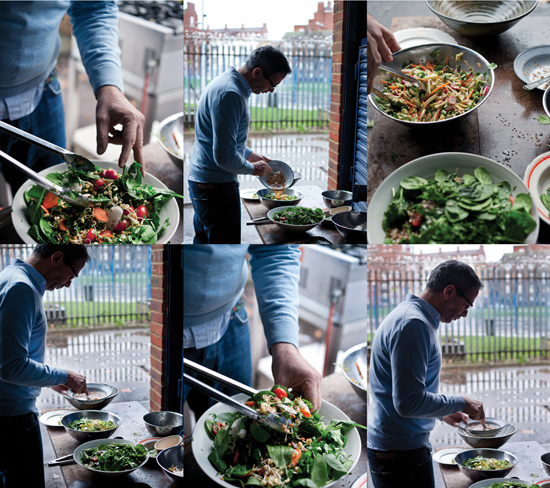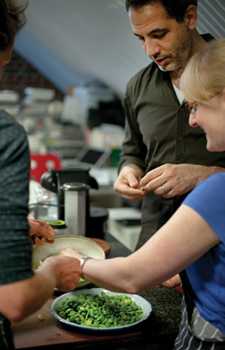Copyright 2014 by Yotam Ottolenghi, LLP
Photographs copyright 2014 by Jonathan Lovekin
All rights reserved.
Published in the United States by Ten Speed Press, an imprint of the Crown Publishing Group, a division of Random House LLC, a Penguin Random House Company, New York.
www.crownpublishing.com
www.tenspeed.com
Originally published in slightly different form in Great Britain by Ebury Press, an imprint of Ebury Publishing, a Penguin Random House Company, London.
Ten Speed Press and the Ten Speed Press colophon are registered trademarks of Random House LLC.
Ottolenghi, Yotam.
Plenty more : vibrant vegetable cooking from Londons Ottolenghi / Yotam Ottolenghi.First United States edition.
pages cm
Includes index.
1. Cooking (Vegetables) 2. Ottolenghi (Restaurant) I. Title.
TX801.O8825 2014
641.65dc23
2014017924
Hardcover ISBN 978-1-60774-621-8
Ebook ISBN 978-1-60774-622-5
v3.1_r3
CONTENTS
INTRODUCTION
VEGI-RENAISSANCE
Chunky green olives in olive oil; a heady marinade of soy sauce and chile; crushed chickpeas with green peas; smoky paprika in a potent dip; quinoa, bulgur, and buckwheat wedded in a citrus dressing; tahini and halvah ice cream; savory puddings; fennel braised in verjuice; Vietnamese salads and Lebanese dips; thick yogurt over smoky eggplant pulpI could go on and on with a list that is intricate, endless, and exciting. But I wasnt always aware of this infinite bounty; it took me quite a while to discover it. Let me explain.
As you grow older, I now realize, you stop being scared of some things that used to absolutely terrify you. When I was a little, for example, I couldnt stand being left on my own. I found the ideanot the experience, as I was never really left alonepetrifying. I fiercely resented the notion of spending an evening unaccompanied well into my twenties; I always had a plan. When I finally forced myself to face this demon, I discovered, of course, that not only was my worry unfounded, I could actually feast on my time alone.
Eight years ago, facing the prospect of writing a weekly vegetarian recipe in the Guardian , I found myself gripped by two such paralyzing fears.
First, I didnt want to be pigeonholed as someone who cooks only vegetables. At the time, and in some senses still today, vegetables and legumes were not precisely the top choice for most cooks. Meat and fish were the undisputed heroes in lots of homes and restaurant kitchens. They got the star treatment in terms of attention and affection; vegetables got the supporting roles, if any.
Still, I jumped into the water and, fortunately, just as I was growing up and overcoming my fear, the world of food was also growing up. We have moved forward a fair bit since 2006. Overall, more and more confirmed carnivores, chefs included, are happy to celebrate vegetables, grains, and legumes. They do so for a variety of reasons related to reducing their meat consumption: animal welfare is often quoted, as well as the environment, general sustainability, and health. However, I am convinced there is an even bigger incentive, which relates to my second big fear when I took on the Guardian column: running out of ideas.
It was in only the second week of being the newspapers vegetarian columnist that I felt the chill up my spine. I suddenly realized that I had only about four ideas up my sleeveenough for a monthand after that, nothing! My inexperience as a recipe writer led me to think that there was a finite number of vegetarian ideas and that it wouldnt be long before Id exhausted them.
Not at all! As soon as I opened my eyes, I began discovering a world of ingredients and techniques, dishes and skills that ceaselessly informed me and fed me. And I was not the only one. Many people, initially weary of the limiting nature of the subject matter (we are, after all, never asked in a restaurant how wed like our cauliflower cooked: medium or medium-well), had started to discover a whole range of cuisines, dishes, and ingredients that make vegetables shine like any bright star.
Just like me, other cooks are finding reassurance in the abundance around them that turns the cooking of vegetables into the real deal. They are becoming more familiar with different varieties of chiles, ways of straining yogurt, new kinds of citrus (like pomelo or yuzu), whole grains and pearled grains, Japanese condiments and North African spice mixes, a vast number of dried pasta shapes, and making their own fresh pasta. They are happy to explore markets and specialty shops or go online to find an unusual dried herb or a particular brand of curry powder. They read cookbooks and watch television programs exploring recent cooking trends or complex baking techniques. The world is their oyster, only a vegetarian one, and it is varied and exciting.
TURNING IDEAS INTO RECIPES
I get my recipe inspiration in a variety of ways. When traveling, I am constantly on the lookout for new ideas. A trip to Tunisia is a waste of time unless I come back with the ultimate method for making harissa ; Christmas on the beach in Thailand will be cut short (much to my partner Karls dismay) in favor of a search through swarming Bangkok alleys for the elusive best-ever oyster omelet.
My collection of cookbooks and magazines takes me on journeys into the creative minds of other cooks, or their heritage, or both. It might start off from an image or an idea that I find in a bookcombining sorrel with mustard seeds, for example, or roasting carrots with orange halveswhich sparks a chain reaction leading to a brand-new dish. Over the past few years I have been on a long journey to Iranalas, a virtual onethrough the pages of some of my favorite books (may I mention Najmieh Batmanglijs marvelous Food of Life ?); I have been on similar tours to Lebanon and Japan (Michael Booths Sushi and Beyond is exemplary); and I was made privy to the ins and outs of various unusual grains (through Liana Krissoffs Whole Grains for a New Generation ) and vegetables (by Deborah Madisons Vegetable Literacy ).
My colleague chefs at Ottolenghi and NOPISami, Scully, Helen, and many othersalso constantly stimulate me with their ideas, which turn into dishes and products that we serve in our shops and restaurants.
Pivotal to this books content is the way in which initial, nascent ideas are turned into actual recipes. Since Plenty and my early Guardian columns, I have expanded my range of ingredients and techniques, but I have also vastly changed the way I work, and Plenty More is the result and expression of this change.


